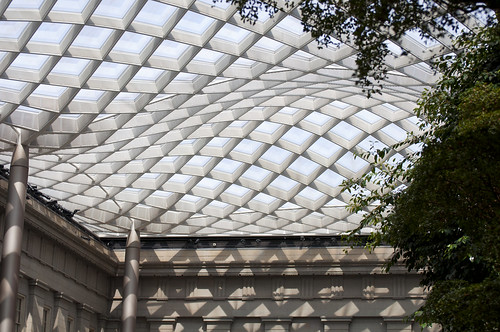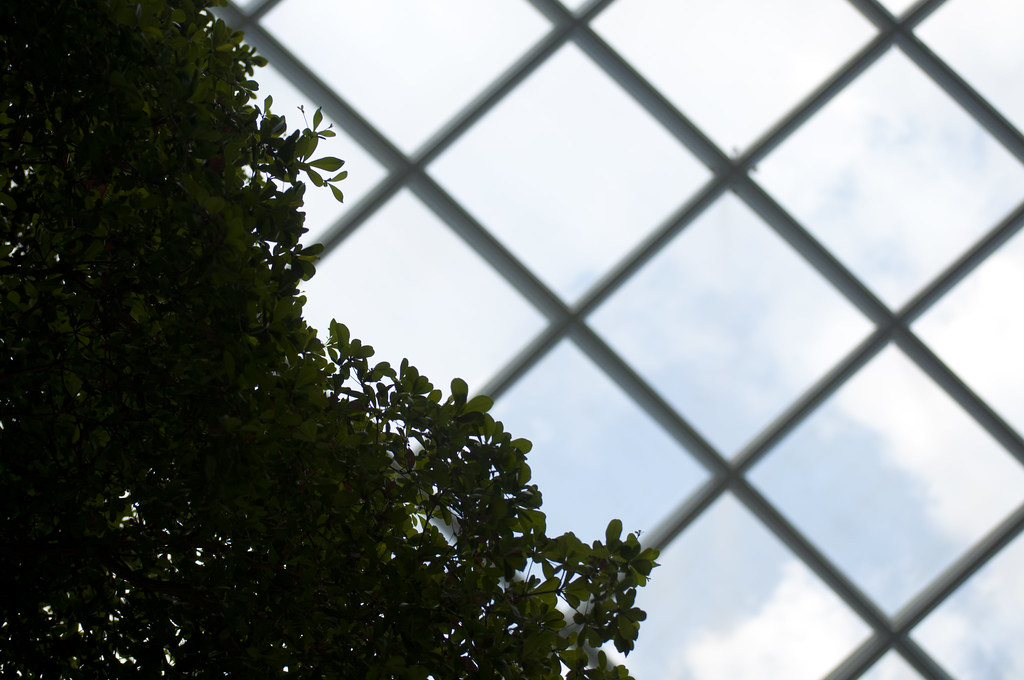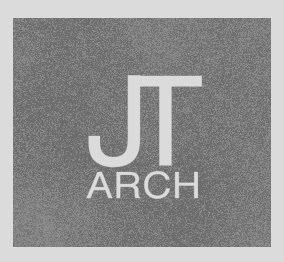The trip to Rome came with two waystops, including the town of Sienna, with high class shops and the famous campo, a large plaza surrounded by cafes and a spot where everyone gathers to watch the beautiful sunsets around the large bell tower. Our other stop was just outside of Rome, in Tivoli, home to the ruins of Hadrian's Villa and a true step back in time. The layout of the complex can take a whole day to really see everything and includes stops along the ruins of the maritime theater, auditoriums, a library and two large reflecting pools. There are also countless amounts of black olive trees that adorne the site and have held up against the crumbing structures.
 |
| Tivoli Broken Columns |
Arriving in Rome was a little overpowering at first, riding in on the bus, you only see quick glimpses of some of the most famous architecture in the world, and then you are dropped off with all your luggage, on a crowded street, off to find your hotel. We arrived at a time where the outdoor markets were just closing and being disassembled, but there was still plenty of people out on the streets. The hotel this time was far from the worst we had stayed at, but by the end, it looked like a warzone. One of the water pipes has busted and flooded another students room and the ceiling tiles came crashing down on my hallway as water poured out. It became impossible to go through the halls without getting wet and the staff didn't seem too interested in fixing the problem.
There is a whole lot to see in Rome and although it may not seem that big, there is a lot of walking to be done. Because our flight was scheduled to be a day earlier than when the program ended, I had to squeeze a lot of buildings into one day. I literally saw the Pantheon, Spanish Steps, San Carlo Alle Quattro Fontane, Trajan's Column, the Colosseum and the worlds most most expensive McDonalds in one day. It's a lot to take in...
Again there was disappointment in seeing one of my most anticipated buildings, as the Pantheon was also under construction and had half of the front completely covered up. The inside was still accessible to visitors and makes you feel small when looking upwards to the oculus. There seemed to be a pretty good crowd gathered there most of the time and is a notorious place for pickpockets, but it's really a humbling feeling standing there, looking up into the clouds.
 |
| Pantheon Ceiling |
The Colosseum has to first be experienced by walking all the way around it, which is what I ended up doing because I didn't know where the entrance was. You really get a sense on the scale and how much work had to go into building it. There are a good number of people always here and the line was a bit long and a little chaotic. Outside, there are plenty of street performers that are decked out in imperial Roman gear while taking pictures with the tourist and livening up the interactions around the arena. The ticket to get in is kind of pricey, about twenty euros, but there is a lot to see inside, although the lower levels are blocked off and only open during tours. It's hard to imagine all that went on here and the mix of emotions, with little details standing out, like the cross placed for all those that lost their lives over the entertainment.
 |
| Roman Colosseum |
The last day of the trip was unfortunately a gloomy one where rain was an issue for most of the day. It started by getting a very fast private tour through the Parco della Musica by Renzo Piano and ended with a long trek across the river to see the Vatican. Going through the Roman streets at night can get a little interesting, but not seeing the famous basilica and plaza was not going to happen. Since it was late in the day, going inside to view the chapel was unfortunately out of the question as the line still extended through the great column arms of the plaza. The feeling of standing in the center of St. Peters square was still one of the best ways to end the trip with a bang. Wether it's admiring the offset of the almost central spire, walking through the grand columns, having the statues watch you from above or simply seeing the Vatican lights turn on, it's an experience you want to have again
 |
| St. Peters Basillica |
The next day came very early, a wake up around four in the morning, sloshing through wet hallways and having a high speed taxi ride through the streets of Roma is an interesting way to start a day. The first flight back to Frankfurt was a short one and resulted in a four hour layover until the flight back. This plane ride would turn out to be glorious, as the cabin was not even a forth full, lending plenty of room to spread out and lean back. Four and a half movies later, the plane touched groung in the US, marking the end of an incredible journey.
The experience gained was something that can never be taken away and seeing Europe should be a experience everyone should get to have. I can still say the US is still the greatest country I have ever been to, but we have a lot to learn from Europe and how architecture can not only attract people to cities, but it can bring them together.
So thus concludes the Europe Travel blog. From now on, I'll be checking back in every now and then to focus more on individual works, not just a run down. Thanks for reading and leave a comment if you have any questions.














